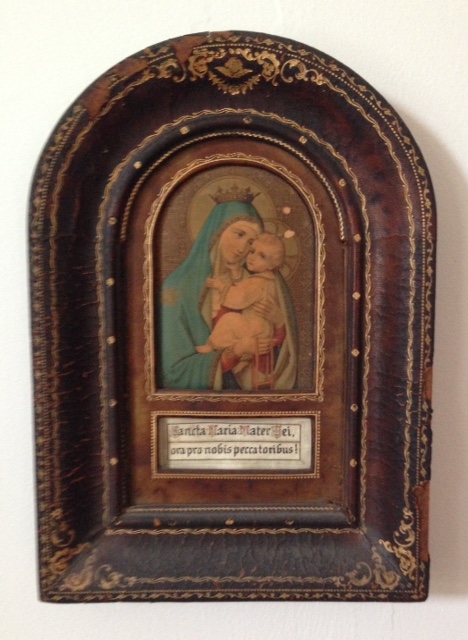
A slow, meditative reading of scripture. At a time when we are alert. In a quiet and restful place. You need time enough so there is no sense of being hurried.
1. Select a passage; possibly in advance, the day before. Possibly a section of a reading from the Daily Office readings or next Sunday’s Eucharist.
2. Lectio Read the passage slowly, pause as you want. Read slowly, gently listening for God's word for you. Read it again, and possibly again. Notice the phrases and words. What word or phrase draws your attention or touches you? Possibly read it aloud. Let the facts settle in; brood over them, allow them to enter imagination & memory. It is a matter of our spiritual development to cultivate the ability to listen deeply, to hear "with the ear of our hearts.”
3. Meditatio - Reflection on the text. Bring to mind memories and associations related to the text. Allow the reading to sink into your heart and mind. Join Mary "pondering in her heart." Gently repeat the word or phrase, allow it to touch your thoughts, longings and hopes.
4. Oratio - Listening & responding to God. Respond silently or aloud with thoughts, words, desires, feelings, commitments, sorrow, and gratitude. Are there major concerns or joys in your life at the moment that this reading is addressing? Is there some area of your life where God may be inviting you to grow?
5. Contemplatio - Sit and enjoy the presence of God. Allow God to enter a deeper place in us. Trust that God is working within even if we do not notice. Rest in God's presence
Do not be overly tight about the steps. In practice they may flow from one to another; may happen at the same time. It may be a useful learning method to stay with the steps as separate acts for an initial period.
Father Lowell Grisham, OA, describes the four movements this way[i],
Lectio - reading/listening
Meditatio - thinking/pondering
Oratio - loving/praying
Contemplatio - silence
Variations on use
Lectio is most frequently used as a standalone activity. There are also other uses.
I use it as a way of preparing for the Sunday Eucharist. I’ll arrive early, settle myself, look up the readings on a lectionary website, select a reading, and do a short lectio. On occasion I’ve done the same in saying the Daily Office on my own.
It can also be used in a group setting. Maybe something like this –
Lectio One person reads the passage aloud, slowly. Each person listening for God's word. Read it again, possibly by another person in the group. Is there a word or phrase that draws you?
Meditatio – Set what the time will be for reflection on the text. Have a time in silence for each person to bring to mind memories and associations related to the text. Allow the reading to sink into your heart and mind. Silently repeat the word or phrase, allow it to touch your thoughts, longings and hopes.
The group: Each person might share their word or phrase. I’d suggest that you simply go around the circle just sharing that much to begin with. Then you might go around the circle a second time with each person sharing something from their reflection. Then the group returns to silence and engages in a time of Oratio.
Oratio – In silence -- Listening & responding to God with thoughts, words, desires, feelings, commitments, sorrow, and gratitude.
Contemplatio - Sit and enjoy the presence of God. Rest in God's presence
The group: You may want to allow time for each person to share what they want to share. Suggest 2 or 3 minutes/person.
The Rhythm of Christian Life and of Lectio
The Christian life can be seen as a cycle between being renewed in out baptismal identity and purpose and an apostolate in which we are instruments of God’s love in the world. The cycle is between a conscious and intentional attention to God, prayer life, our relationships, Christian formation and a subconscious reliance upon God as members of the Body of Christ, in the workplace, family, friendship, civic life and congregational life. (See Fill All Things, Robert A. Gallagher, Ascension Press, 2008)
The practice of lectio divina depends on that cycle. It is grounded in our developing the capacity for a gentle oscillation between resting in God in the spiritual practices of the Christian community and allowing ourselves to be instruments of God’s love in our daily life with family and friends, in workplace and civic life. In the one we are being transformed into the likeness of Christ. In the other we are actively cooperating with God’s grace in human life.
For priests and religious the cycle is the same yet with a slightly different expression. In Eleanor McLaughlin’s Priestly Spirituality she offers this understanding of priesthood: “traditional sacramentalism begins with participation in the divine life and moves into the world in mission as the fruit of that Meeting.”(p. 6) Sisters and brothers who are life professed would, in my view, share in that vocation. Mother McLaughlin calls it Anglican Incarnationalism.
It is the legacy of Thornton and Leech, Ramsey and Herbert, Underhill and deWaal, Ailred and Dame Julian, Anslem and Charles Williams. It’s Thornton’s understanding that “the center of priestliness is participation in the life of God for and with the people.” (p. 5) It’s Archbishop Ramsey’s call of “Being with God with the people on your heart.” A way of redemptive suffering that “avoids the archaic, the authoritarian, the socially irresponsible as well as the bureaucratic and professional model.” (p. 5)
Page numbers are from Priestly Spirituality, Ascension Press, 1983
rag+
[i] Lowell Grisham, Practicing Prayer: A Handbook, 2014, Ascension Press.